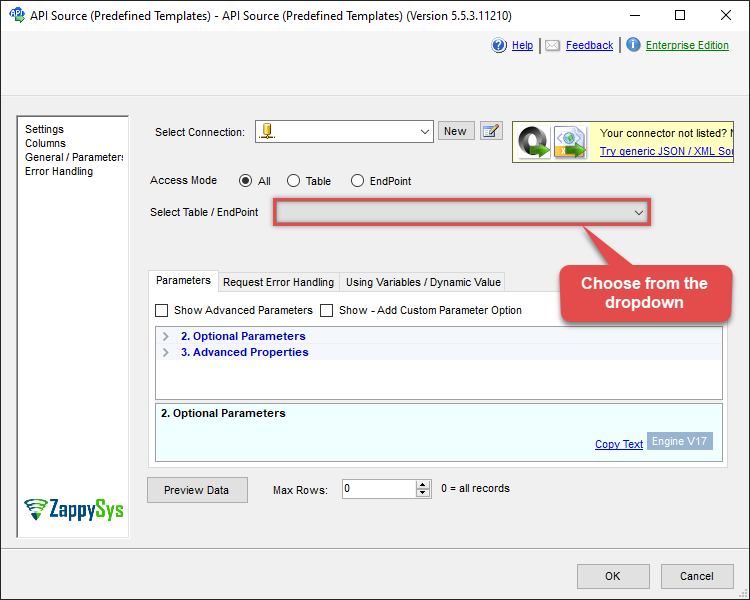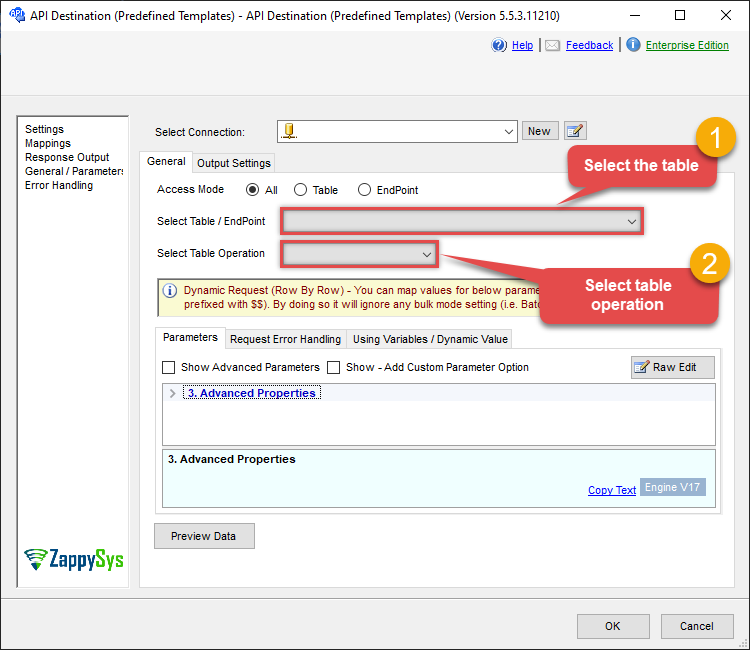Endpoint Delete event
Name
delete_event
Description
Related Tables
Parameters
| Parameter | Required | Options |
|---|---|---|
|
Name:
Label: CalendarId |
YES | |
|
Name:
Label: EventId |
YES |
Output Columns
| Label | Data Type (SSIS) | Data Type (SQL) | Length | Description |
|---|---|---|---|---|
| Id |
DT_WSTR
|
nvarchar(50)
|
50 |
Input Columns
| Label | Data Type (SSIS) | Data Type (SQL) | Length | Description | |||||||||||||||||||||||||||||||||||||||||||||||||||||||||||||||||||||||||||||||||||||||||||||||
|---|---|---|---|---|---|---|---|---|---|---|---|---|---|---|---|---|---|---|---|---|---|---|---|---|---|---|---|---|---|---|---|---|---|---|---|---|---|---|---|---|---|---|---|---|---|---|---|---|---|---|---|---|---|---|---|---|---|---|---|---|---|---|---|---|---|---|---|---|---|---|---|---|---|---|---|---|---|---|---|---|---|---|---|---|---|---|---|---|---|---|---|---|---|---|---|---|---|---|---|
| There are no Static columns defined for this endpoint. This endpoint detects columns dynamically at runtime. | |||||||||||||||||||||||||||||||||||||||||||||||||||||||||||||||||||||||||||||||||||||||||||||||||||
Examples
SSIS
Use Google Calendar Connector in API Source or in API Destination SSIS Data Flow components to read or write data.
API Source
| Required Parameters | |
|---|---|
| CalendarId | Fill-in the parameter... |
| EventId | Fill-in the parameter... |

API Destination
This Endpoint belongs to the Events table, therefore it is better to use it, instead of accessing the endpoint directly. Use this table and table-operation pair to delete event:
| Required Parameters | |
|---|---|
| CalendarId | Fill-in the parameter... |
| EventId | Fill-in the parameter... |

ODBC application
Use these SQL queries in your ODBC application data source:
Get event
Gets event
DELETE FROM Events
WITH (CalendarId='MyCalendarId',
EventId='MyEventId')
delete_event endpoint belongs to
Events
table(s), and can therefore be used via those table(s).
SQL Server
Use these SQL queries in SQL Server after you create a data source in Data Gateway:
Get event
Gets event
DECLARE @MyQuery NVARCHAR(MAX) = 'DELETE FROM Events
WITH (CalendarId=''MyCalendarId'',
EventId=''MyEventId'')';
EXEC (@MyQuery) AT [LS_TO_GOOGLE_CALENDAR_IN_GATEWAY];
delete_event endpoint belongs to
Events
table(s), and can therefore be used via those table(s).
